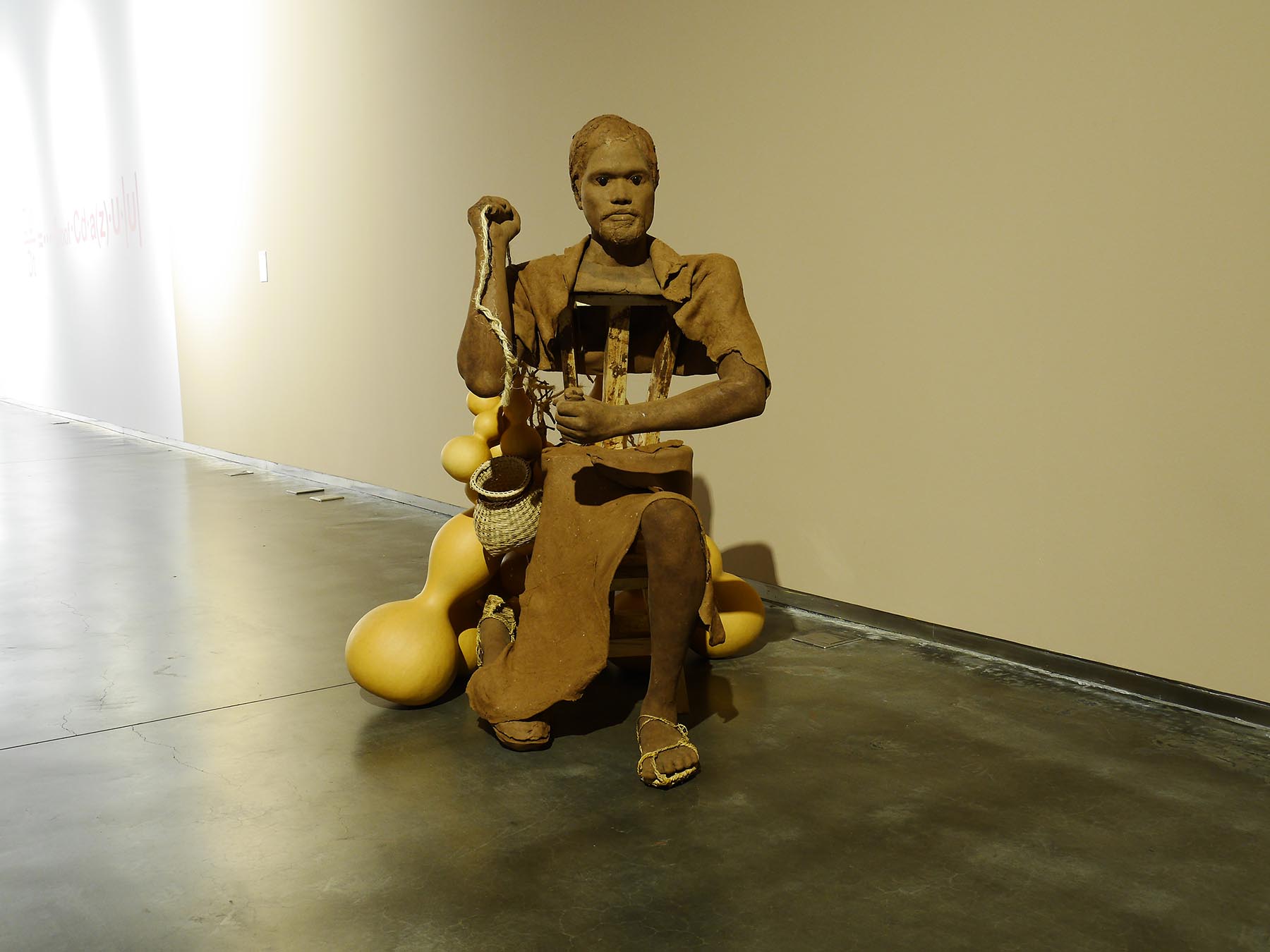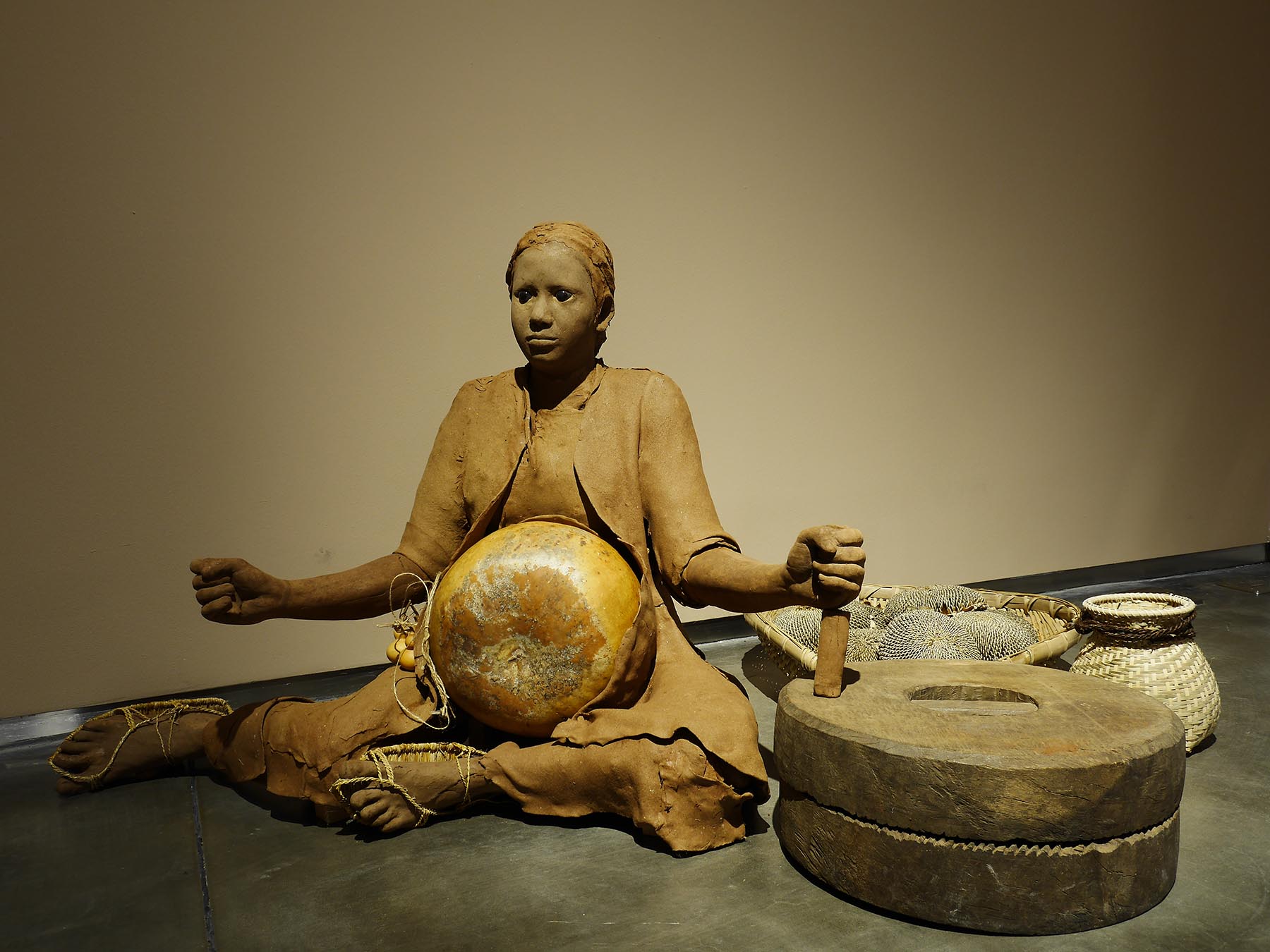A sculptor and installation artist, Benitha Perciyal is known for using organic materials to create works inspired by Christian mythology. Her work centres around the parallels between the cyclicality of nature and human life, as well as death and rejuvenation. She uses objects made with natural materials and often associated with vernacular Christian liturgical practices, derived largely from biblical figures, imagery and iconography.
Perciyal was born in Tiruvannamalai, Tamil Nadu. An avid reader, she was drawn to the Christian undertones and allegories in the Russian novels that she read in Tamil translation. Perciyal received a BFA, followed by an MFA (2002) in painting and printmaking from the Government College of Fine Arts, Chennai. Subsequently, she received a junior research grant and began working out of a studio at the Lalit Kala Akademi, Chennai. She also began holding workshops at Forum Art Gallery. In 2015, she set up her own studio in George Town, Chennai, supported by the Amol Vadehra Art Grant (2015–16) from the Foundation for Indian Contemporary Art.
Most of her sculptures are perishable, since they are made from natural materials such as seeds, resin, coal, bark, reclaimed teakwood and incense powder. The materials require long periods of curing and seasoning. Perciyal uses fragrance and tactility as sensory and metaphorical elements in her work. Her installations and exhibition spaces often feature figures cast from fragrant mixes, resin-cast kolu dolls and wooden books carved from discarded teak. She introduces religious symbolism in her sculptures by highlighting signs of wear, bruising and damage — especially in figures representing the Christ and Mary — to meditate on the imperfections of the body and material impermanence in contrast to divine perfection.
Notable works include her installation The Fires of Faith (2014), which was created for the 2014 Kochi-Muziris Biennale and was inspired by a broken image of the Christ in an antique shop in Mattancherry, Kochi. The work consists of sculptures cast in incense made from a mix of frankincense, myrrh, cinnamon and various other spices and oils local to southern India. In another work, Naan Oru Penn, Yen Yennam Aayiram (“Me a Woman, My Thoughts a Thousand”) (2016), exhibited at the 2016 Yinchuan Biennale, her figures are shown with gourd containers, recalling the practices of her home.










